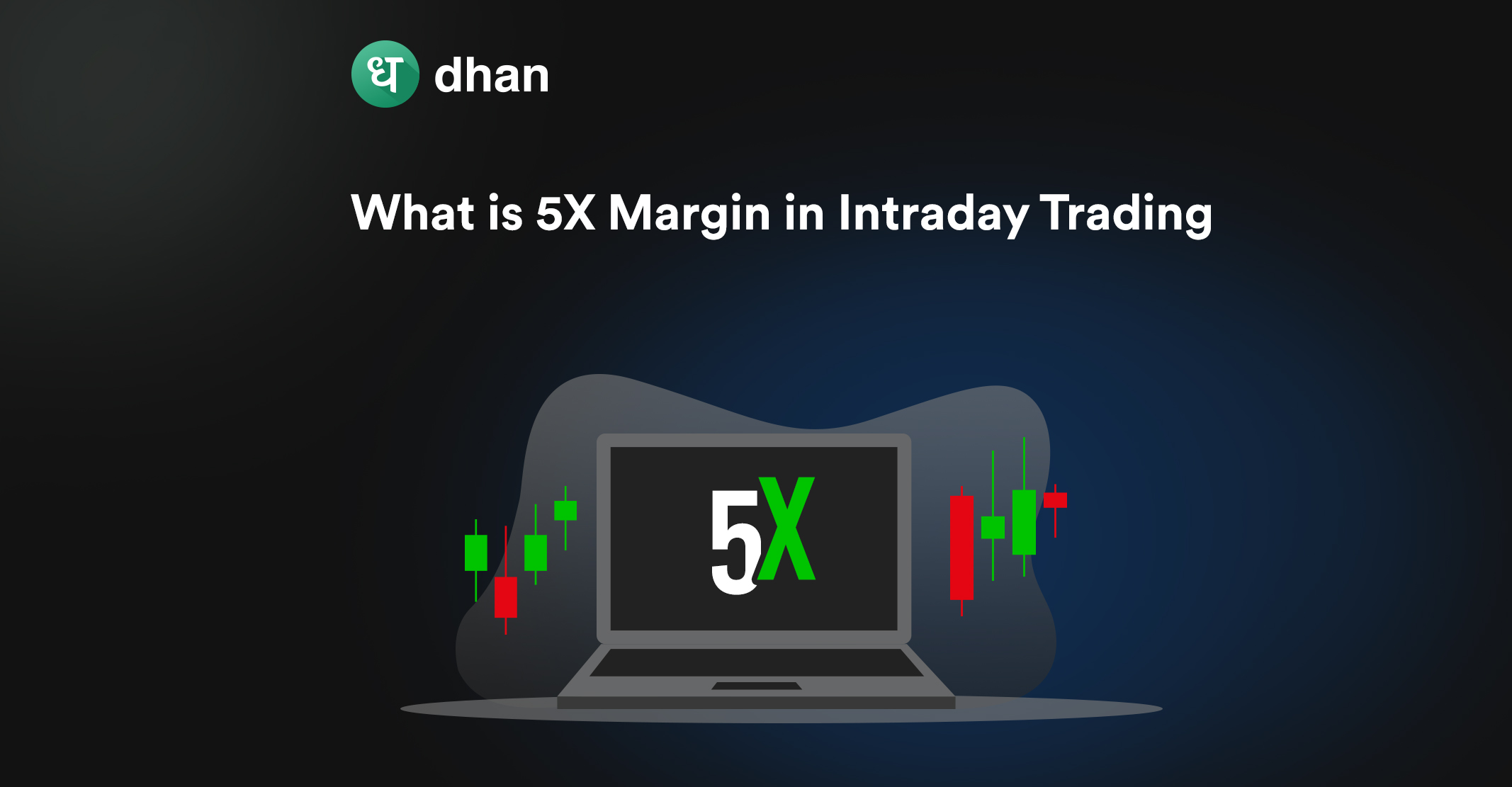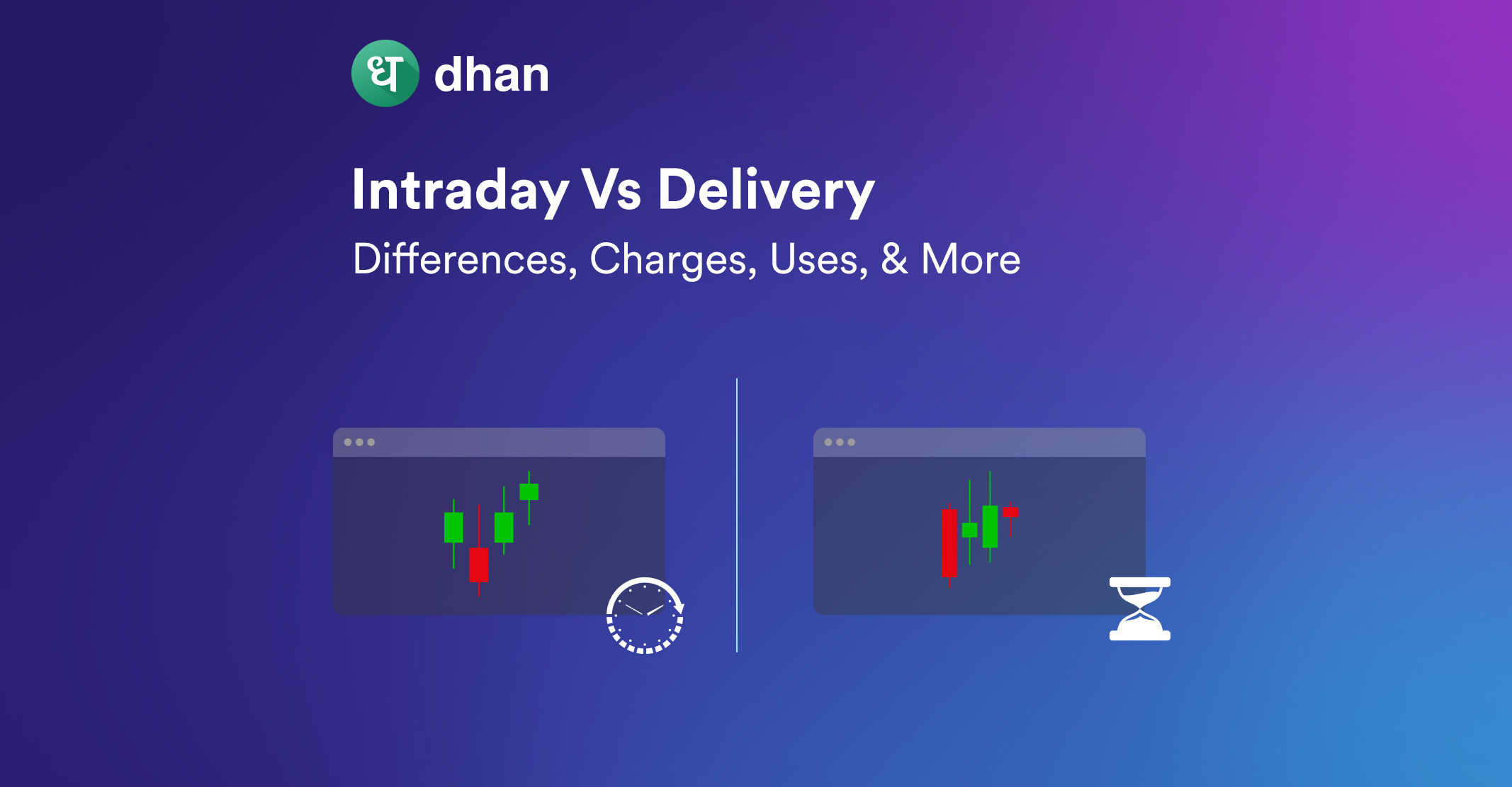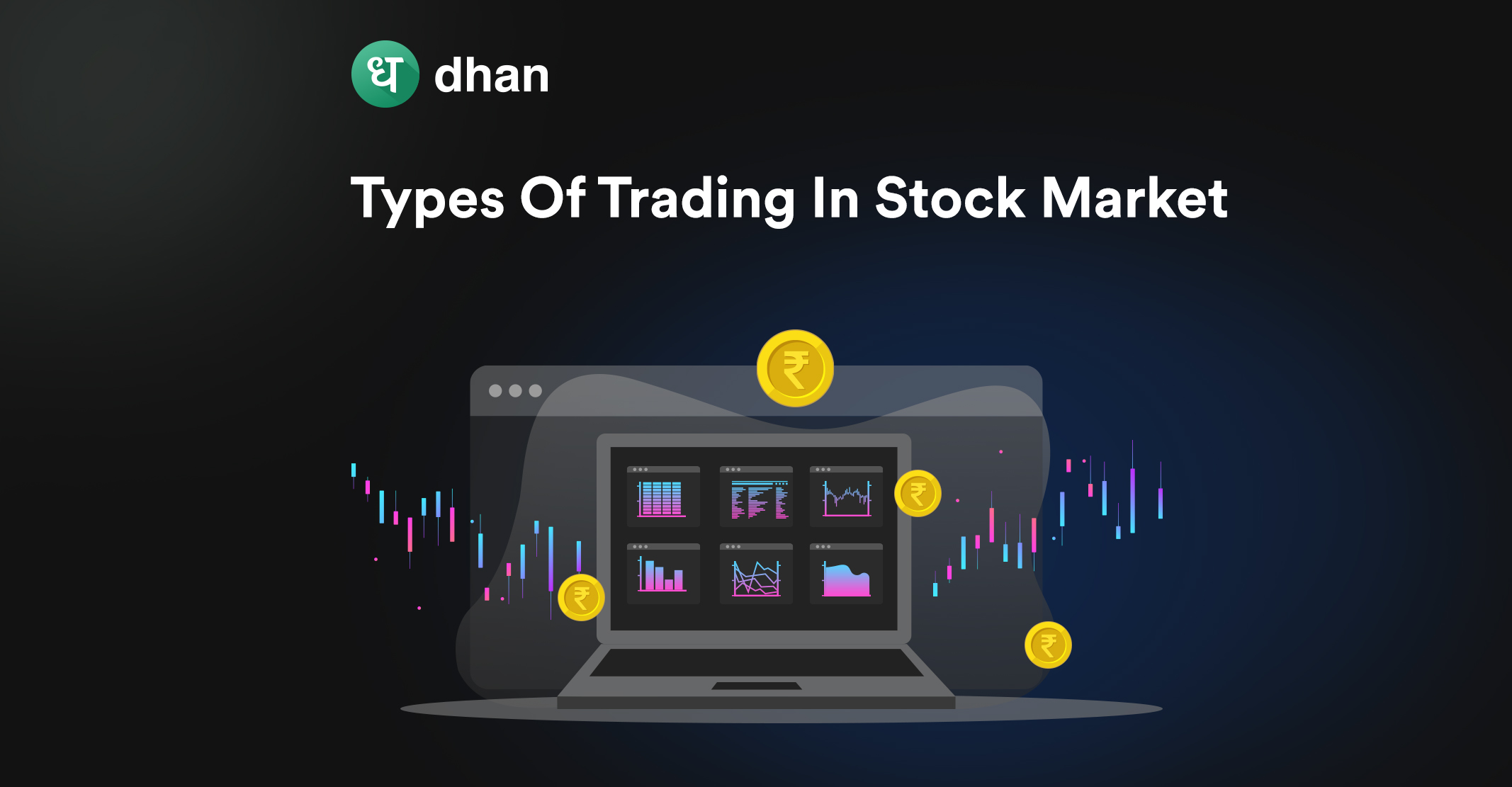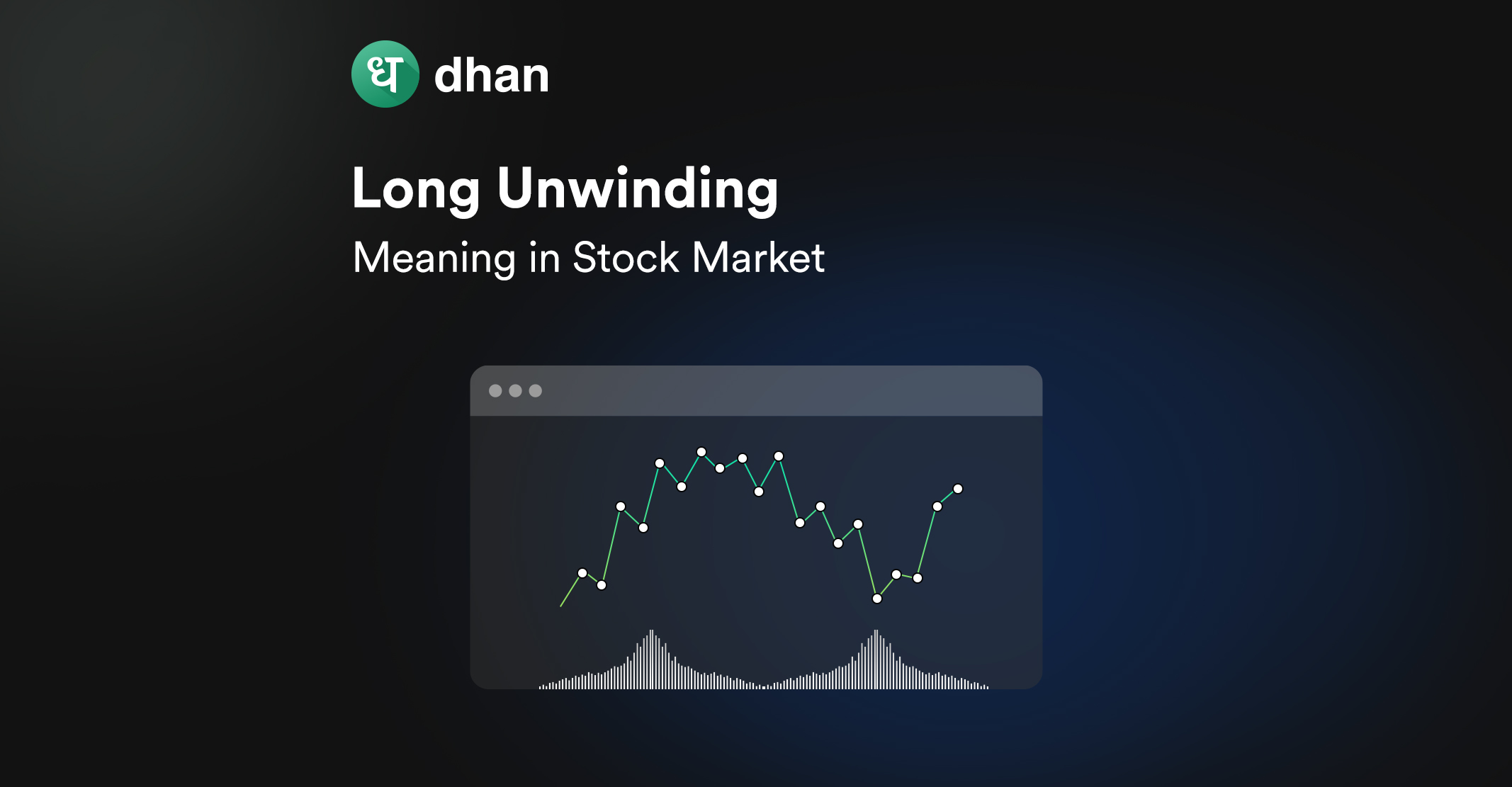Day trading allows you to utilize 5X margins in the cash segment, which is the equity market. This means you can take a long or short position in stocks five times larger than your actual capital.
While this may increase potential gains, it also increases risks. As a result, understanding how to use this leverage effectively is crucial. Read on to learn more about 5x intraday margins.
What is a 5X Margin in Intraday Trading?
A 5X margin means you can take a position worth five times the amount of money you have in your trading account when intraday trading.
For instance, if you possess Rs. 10,000, a 5x margin allows you to trade as if you had Rs. 50,000. This leverage increases both profits and losses.
Imagine you bought a stock at Rs. 100 and aim to sell it at Rs. 104 while setting a stop-loss at Rs. 98.
In a successful trade, you earn Rs. 4 (4% of the share price), while a loss results in a Rs. 2 loss (2% of the share value).
With a 5x margin, you only need to invest Rs. 20 of your capital, and the remainder can be borrowed from your broker.
In the end, you earn a Rs. 4 profit from a Rs. 20 initial capital, rather than investing the entire Rs. 100.
Why is There a 5X Margin for Intraday Trading?
Exchanges typically require 20% of the margin to be paid upfront when trading intraday. This automatically means that you get 5X margin leverage.
100% (total margin) / 20% (margin paid upfront) = 5X leverage.
Unlike delivery trading where you must pay 100% of the margin upfront, intraday trading’s 5X leverage allows traders to control larger positions more with minimal capital.
That said, margin requirements for intraday positions depend on the Value at Risk (VaR) and Extreme Loss Margin (ELM) of each stock.
Value at Risk (VaR) estimates the maximum potential loss within a specified probability and time frame. Extreme Loss Margin (ELM) is a risk margin collected against market loss.
High-quality stocks have margin requirements of less than 20%, but exchanges charge a minimum of 20%. For low-quality stocks, the intraday margin requirements may be higher.
Regulators impose this limit to manage risk and protect traders and the financial system from excessive speculation.
Thus, the intraday margin is a result of regulatory requirements applicable to MIS orders, Bracket Orders, and Cover Orders.
Pros and Cons of 5X Intraday Margin
Using a 5x margin in trading can offer both advantages and disadvantages:
Pros:
- Increased Profit Potential: Leverage allows you to control a larger position with a smaller capital, potentially amplifying profits.
- Diversification: You can trade a broader range of assets and strategies with limited capital.
- Capital Efficiency: It frees up capital for other investments or trading opportunities.
Cons:
- Increased Risk: Leverage magnifies losses, leading to a potential wipeout of your trading capital.
- Margin Calls: If trades move against you, you may face margin calls requiring additional funds or liquidation of positions.
- Limited Time: Recovering losses due to leverage during the same trading day can be an uphill task
Managing Risk with 5X Intraday Margin
Risk management with a 5X margin refers to a strategy for managing the risk associated with trading while utilizing a leverage ratio of 5:1.
In financial markets, leverage allows traders to pursue a larger position size with limited capital.
Although leverage boosts earnings, it also raises losses. Thus, effective risk management is crucial. Here are some key strategies for risk management when using a 5X margin:
1. Set Stop-Loss Orders
Implementing trailing stop-loss orders is crucial when trading with leverage. A stop-loss order is a predefined price level at which you will exit a trade to limit your losses.
With 5X leverage, a small price movement against your position can result in a significant loss, so setting tight stop-loss levels is important.
2. Diversify Your Portfolio
Diversification is crucial when using a 5X margin, as it helps spread risk across multiple assets or trades.
With higher leverage, the potential for significant losses in a single position is amplified, so dividing capital among different trades reduces the impact of a single adverse trade on your overall portfolio.
3. Position Sizing
Position sizing is key when it comes to intraday trading. Limit the size of your positions based on the available margin and do not trade beyond that.
Carefully calculate the size of your positions to limit the risks, which can lead to significant losses if the market moves against you.
Regulations on Intraday Margin Trading
Securities and Exchange Board of India (SEBI) mandates margin trading participants to maintain 50% of the total investment as the initial margin and 40% of the market value as the maintenance margin, with both amounts required to be in cash.
Previously, traders had to meet daily margin requirements by day’s end.
New SEBI rules mandate fulfilling margin obligations at the start of each intraday deal, introducing a stricter margin management system.
How to Get 5x Margin for Intraday Trading?
To get a 5x margin for intraday trading, you need to follow certain steps as listed below.
1. Choose a Reliable Stock Broker
Select a trustworthy intraday trading app that offers tools and order execution that is reliable, especially for intraday trading which is a quick and intense discipline.
2. Complete KYC Requirements
Fulfill all Know Your Customer (KYC) requirements and open a trading account. This involves submitting necessary documents like identity proof, address proof, and bank details.
3. Understand Margin Rules
Study and understand the margin rules and regulations provided by your broker. While a 5X margin for intraday trading is the same across all brokers, there may be other specifications that you need to keep an eye on.
4. Deposit Sufficient Capital
Ensure your trading account has sufficient funds. To achieve a 5x margin, deposit 1/5th of your intended trade value.
Having this capital in your account allows you to access the desired leverage for intraday trading.
5. Practice Risk Management
Set stop-loss orders to limit potential losses, diversify your trades to spread risk, and calculate position sizes based on your risk tolerance and stop-loss levels.
This helps you control the amplified risks associated with 5x leverage in intraday trading. Tools like Trader’s Controls can also be super useful.
Conclusion
Understanding what is margin in intraday trading is crucial. 5X margin refers to the ability to trade with five times the capital you have, increasing both profits and risks.
While it offers the potential for substantial gains, the margin also demands responsible risk management. It’s best to be cautious when using leverage, as it magnifies both gains and losses and ensures you fully understand the risks involved before trading.
Traders should understand the ins and outs of using the 5x margin, use strict risk controls, and optimize their strategies for intraday trading.
Like this? Then you’ll love:



